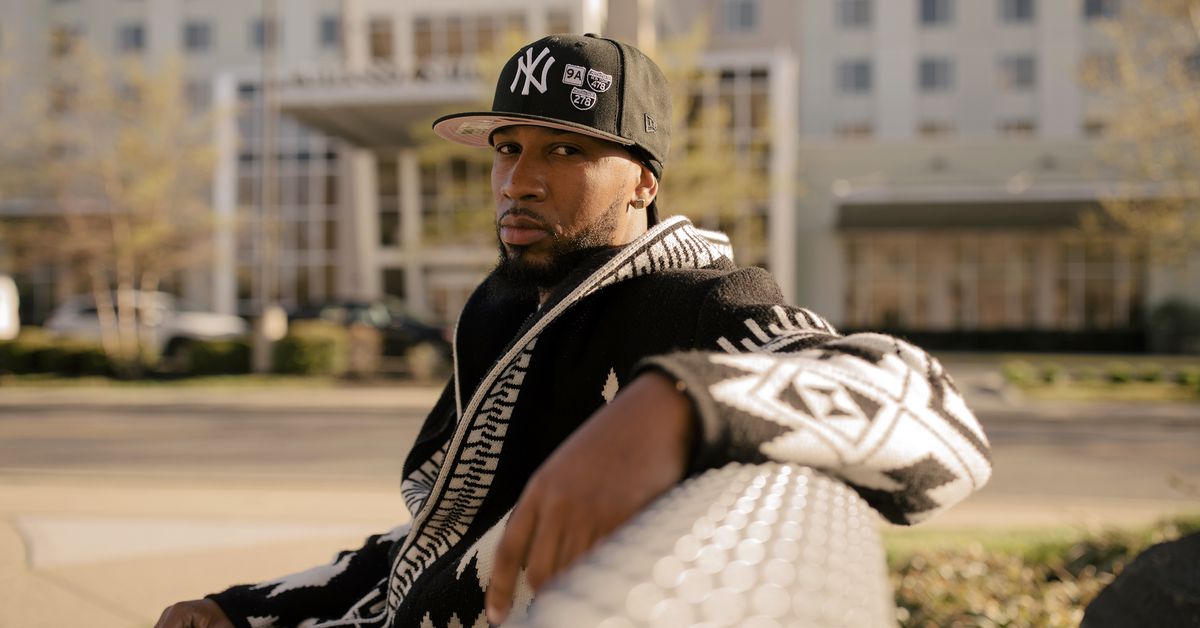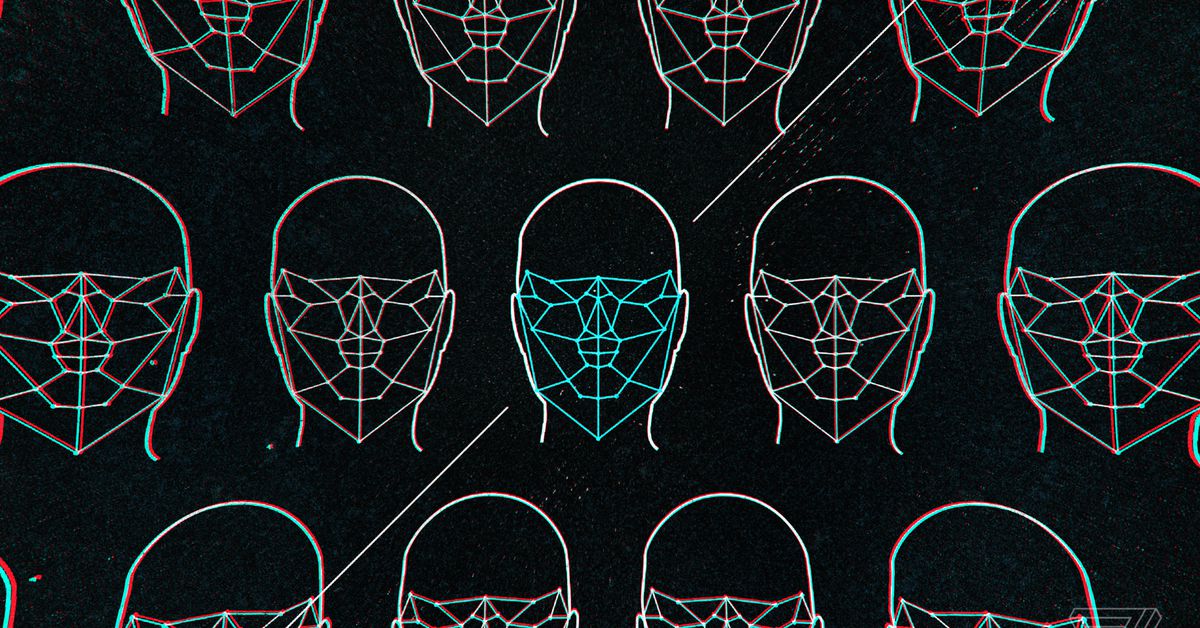Amazon fired Chris Smalls. Now the new union leader is one of its biggest problems.
Chris Smalls, a former Amazon warehouse manager fired during the pandemic, is leader of the Amazon Labor Union. | José A. Alvarado Jr. for VoxWhat’s next for the face of America’s new labor movement. A year ago, Chris Smalls...

A year ago, Chris Smalls couldn’t get politicians to return his calls.
But on a muggy morning in late April, two of the biggest names in politics — Sen. Bernie Sanders (I-VT) and Rep. Alexandria Ocasio-Cortez (D-NY) — were making a special trip to Staten Island, New York to visit with the 33-year-old former Amazon warehouse process assistant, father-of-three, and leader of a resurgent labor movement sweeping the country.
Smalls and his former colleagues, organizing under the banner of the newly formed Amazon Labor Union, or ALU, surprised the world in early April by doing what many thought was impossible: leading the first successful US union campaign at Amazon, a tech giant that has long viewed worker organizing as an existential threat to its business, and done virtually everything in its enormous power to stop it.
“I want you to know that what you did is extraordinary,” said Sen. Sanders, who along with AOC, was having a closed-door strategic meeting with the core ALU organizing team. The politicians were there to discuss the union’s plans for expansion a day before its second vote at a Staten Island warehouse called LDJ5.
Sen. Sanders continued, “All over this country people are working crazy hours, with terrible working conditions, inadequate wages, poor benefits…and what you have done is to take on one of the most powerful corporations in America owned by the second wealthiest guy in this country.”
:no_upscale()/cdn.vox-cdn.com/uploads/chorus_asset/file/23601888/220424_VOXMEDIA_AMAZON_JOSEALVARADOJR_02.jpg) Vermont Sen. Bernie Sanders, backed by Chris Smalls at right, and Rep. Alexandria Ocasio-Cortez at far right, speaks to ALU supporters at Amazon’s Staten Island LDJ5 warehouse on April 24, ahead of the union vote.
Vermont Sen. Bernie Sanders, backed by Chris Smalls at right, and Rep. Alexandria Ocasio-Cortez at far right, speaks to ALU supporters at Amazon’s Staten Island LDJ5 warehouse on April 24, ahead of the union vote.
A few days later, the ALU lost its second vote at LDJ5 — in large part, Smalls said, due to Amazon’s ramped-up anti-union campaigning. It was a major setback, but it hasn’t minimized Smalls’s or the ALU’s ambitions.
“We’re hoping that in the next six months you start to see other unionization drives pop up all over the country,” Smalls told me a week after the loss. Amazon workers at about 100 Amazon warehouses in the US have contacted the ALU asking how they can start their own union campaigns, according to Smalls, and he wants to be the one to lead them.
To do that, Smalls and the ALU will need more support — politically, financially, and logistically — to face the uphill battle to unionize Amazon. The stakes are incredibly high: Amazon is the nation’s second-largest private employer, and it helps set the standard for baseline labor conditions at many companies across the US. If the ALU can win more warehouses, it could propel a growing class of workers who are forming unions — not just at Amazon, but at other major employers like Starbucks, Apple, and Dollar General — to demand a better quality of life from their employers. Whether or not the ALU succeeds will depend on whether Smalls and his team can effectively scale their grassroots organizing efforts on a national level, and if they can withstand Amazon, which spent $4.3 million in anti-union consulting last year alone and is expected to continue pouring in more money in the year ahead.
Just days after the second union vote, Smalls testified before a bipartisan panel in Congress about Amazon’s union-busting tactics — challenging Sen. Lindsey Graham (R-SC) to reframe union rights as “not a Democrat or Republican thing,” but as a “workers’ thing” — in an exchange that went viral. His trip was capped off by a visit to the Oval Office, where he met with Vice President Kamala Harris and President Joe Biden to discuss workers’ legal rights to bargain.
For Biden, the meeting was an opportunity to bolster his image as a strong supporter of organized labor, an association he’s been leaning into “more aggressively than any president in modern times” to win over working-class voters, according to Politico. For Smalls, who Biden jokingly called “my kind of trouble,” the meeting showed that he has the ear of the White House as he takes on Amazon.
Smalls’s performance in DC revealed how, despite having no formal public relations training or media background, he has gotten the entire country’s attention. Even his choice of clothing for his Capitol visit — a bright red, yellow, and black bomber jacket embroidered with the words “Eat the Rich” — made national headlines.
:no_upscale()/cdn.vox-cdn.com/uploads/chorus_asset/file/23601980/biden_smalls.jpeg) President Joe Biden and Amazon Labor Union leader Chris Smalls meet at the White House on May 5.The White House via Twitter
President Joe Biden and Amazon Labor Union leader Chris Smalls meet at the White House on May 5.The White House via Twitter
But back in Staten Island, the ALU faces significant challenges. Days after the second union vote loss, Amazon fired two union organizers at a nearby facility, citing management changes and productivity reasons. The company is also legally contesting the results of the union’s JFK8 win, accusing the National Labor Relations Board of giving preferential treatment to the union.
“Our employees have the choice of whether or not to join a union. They always have. As a company, we don’t think unions are the best answer for our employees,” said Kelly Nantel, a spokesperson for Amazon. “Our focus remains on working directly with our team to continue making Amazon a great place to work.”
Smalls and his fellow organizers are aware that the 8,000 workers at JFK8, where ALU had its first union win, are waiting to see results. If the ALU doesn’t successfully pressure Amazon to deliver on some of the ambitious demands the union campaigned on, which include raising starting wages to $30 an hour, instituting longer break times, and easing Amazon’s demanding productivity quotas, it could lose the momentum it took a year to build, and could discourage other sites from unionizing.
“We’ve got 10,000 people’s lives in our hands,” Smalls told me in late April.
A new type of labor leader
Smalls has been an effective leader in large part because of his authenticity, which stands in stark contrast to the often impersonal culture at Amazon’s warehouses, where management relies on metrics, software, and automated systems to oversee its workforce.
I first started talking to Smalls two years ago at the start of the Covid-19 pandemic, when he was still a process assistant — essentially, an assistant manager — at Amazon and began raising concerns that the company wasn’t doing enough, in his view, to protect his coworkers from exposure to the virus. At the time, Smalls told me he wasn’t interested in starting a union.
But in March 2020, only hours after Smalls organized a protest in his warehouse’s parking lot to demand Amazon provide safer working conditions, the company fired him for allegedly violating its quarantine policy (Smalls disputes this). His case drew widespread attention, particularly after a leaked internal memo revealed that Amazon’s top lawyer, David Zapolsky, called Smalls, a Black man, “not smart or articulate,” and that Amazon should strategically make him the “face of the entire union/organizing movement” so that it would fail.
“When Amazon fired me, it was a no-brainer, I had nothing else to lose; I just lost everything. I lost my health care; I lost my income ... in the middle of a pandemic,” said Smalls at an event in Manhattan in late-April. “And I’m not getting hired anywhere ... I just got fired on TV. Who the hell is gonna hire the whistleblower?”
Smalls’s firing — and how executives were talking about him behind closed doors — didn’t line up with the Smalls people at the warehouse knew, who was a talented, well-liked manager.
“I remember his coworkers always laughing ... people wanted to work on his team,” said Angelika Maldonado, 27, who worked at JFK8 with Smalls and is the ALU’s vice president.
:no_upscale()/cdn.vox-cdn.com/uploads/chorus_asset/file/23603134/220424_VOXMEDIA_AMAZON_JOSEALVARADOJR_21.jpg) Chris Smalls outside Amazon’s LDJ5 warehouse in Staten Island on April 24.
Chris Smalls outside Amazon’s LDJ5 warehouse in Staten Island on April 24.
Smalls also looks the part. He’s a worker, and hasn’t tried to hide that in his transition to being a labor leader. His bold style — colorful tracksuits, durags, Air Jordan sneakers, and oversized sunglasses — sets him apart from more traditional union leaders who typically take on the aesthetic of corporate management.
“Chris doesn’t dress up in a suit and tie,” Tristian Martinez, 24, an associate at JFK8 and an organizer, told me later at the rally in April ahead of the LDJ5 vote. “I think that’s what it should be. If you’re going to be speaking for workers, you should be one of us, dress like one of us.”
In the leadup to the JFK8 vote, Smalls sent out a note to thousands of the facility’s workers, explaining how in his seven years at the company, he started as a top-performing entry-level employee and ended as a disillusioned supervisor, pleading with Amazon to better protect his staff’s health.
“I didn’t just wake up one day and decide to organize,” reads the letter, which talks about how in 2017 he had moved to a different state to help Amazon open up a new warehouse, only to be shuffled back to Staten Island and denied a promotion he applied for 50 times. “I grew tired of seeing this company fail us. I grew tired of seeing people come and go.”
Many of the workers who joined the ALU had similar stories to Smalls — they signed up to work for Amazon with high expectations, hoping to work their way up the chain, only to be disillusioned by high employee churn rates, demanding productivity quotas that can cause some workers to worry using the restroom will get them fired, and what they see as a lack of care by management.
ALU’s Maldonado said that one of her colleagues at the JFK8 warehouse was fired in 2018 for being just a few minutes late. It’s just one of several examples Maldonado said she’s seen of colleagues being fired for minor delays — a common occurrence for many Staten Island workers who live in New Jersey or Brooklyn and have long commutes on public transportation of up to two-and-a-half hours. It’s also a part of a broader pattern Recode has reported on across Amazon’s warehouses, of workers complaining that Amazon’s metrics-oriented management can be impersonal and harsh.
In contrast to that Amazon work culture, in which frustrated employees have complained that they’re treated like “robots,” Smalls and the ALU have cultivated a sense of community and familial bonding.
For the organizers — many of whom are in their 20s or early 30s — the movement is hard work, but also a lot of fun. The de facto union headquarters, a two-bedroom apartment close to the warehouse that two organizers share, has college dorm vibes, with pizza boxes, beers, and union literature strewn about.
“We like to sit down and blast hip-hop music, and we like to order our soul food and eat candy,” said Maldonado. When campaigning in Staten Island, organizers offered tired, hungry workers leaving their shifts barbecue, hot chocolate, empanadas, and African fried rice, to encourage them to engage in conversation.
But the movement’s growth and expanded national interest in its cause have made it harder at times for Smalls to personally lead that on-the-ground organizing. Lately, Smalls has been spending more of his time talking to the press, speaking at events with other prominent worker activists like Dolores Huerta and environmental lawyer Steven Donziger, and meeting with politicians. As Smalls has become not just a local leader but a national one, it can be challenging for him to balance his spokesmanship for the ALU with the demands of working with his team on the ground.
:no_upscale()/cdn.vox-cdn.com/uploads/chorus_asset/file/23603143/220424_VOXMEDIA_AMAZON_JOSEALVARADOJR_16.jpg) Chris Smalls speaks with Ana Maria Archila, candidate for lieutenant governor of New York, in Staten Island on April 24.
Chris Smalls speaks with Ana Maria Archila, candidate for lieutenant governor of New York, in Staten Island on April 24.
Since the recent second warehouse vote loss in Staten Island, Smalls said he’s shifting “back to basics” of organizing.
“Our job is not done. I can’t just stay complacent and forget about what I’ve started here and become a national figure. I have to stay true to the roots. And that’s what we’re doing,” said Smalls on a recent phone call.
Which is why in May, Smalls hosted a belated Hawaiian-themed victory party for the ALU’s JFK8 win at a boat club near the warehouse with live music and a DJ to celebrate, and invited all ALU members working at the JFK8 warehouse.
Most of ALU’s members are “overly stressed out,” Smalls said, and needed a break after a year of organizing. “Not campaigning for a few months is the best thing for us for the long haul. So we’re taking these two to three months to regroup. And once we do that, we’ll be ready midsummer to get right back on the campaign trail.”
Organizers will need the rest. As the failed campaign at LDJ5 showed, Amazon will continue adjusting its anti-union tactics.
Amazon revs up its union fight
After the surprising ALU win at JFK8, Amazon — which, as Recode previously reported, considers unionization the “single biggest threat” to its business model — has increased its efforts to block further unionization.
“The resources Amazon put into JFK8, they just swiveled it over to our building,” Julian Mitchell-Israel, an ALU organizer, told Sen. Sanders and Rep. Ocasio-Cortez at the late April meeting in Staten Island. “LDJ5 is less than five times the size of JFK8, but we’re hit with just as many union busters,” said Israel.
The “union busters” Mitchell-Israel is referring to are outside consultants that Amazon pays up to thousands of dollars a day to convince employees to vote against the union.
One of Amazon’s main tactics is to have consultants and in-house staff run “captive audience meetings” in facilities — meaning mandatory presentations for employees about why they shouldn’t vote for the union. The ALU alleges that at these meetings, management sometimes threatened workers that they could lose their jobs if they vote yes. Currently, the general counsel of the NLRB is asking the board to consider making mandatory captive audience meetings illegal, something labor advocates have long argued for, but that could take months if not years to be decided.
At JFK8, Smalls and the organizing team were able to effectively counter the anti-union messaging in part because longtime Amazon employees, like Smalls and his best friend and organizing co-leader, Derrick Palmer, who has worked at JFK8 for six years, had already established trust with their colleagues.
But with the second vote at LDJ5 — a smaller facility that’s only two years old — newer organizers had a harder time convincing their coworkers that a union was necessary. The warehouse is mostly staffed with part-time workers, said Smalls, who face less physically demanding conditions than at JFK8.
“I expected it, to be honest,” said Smalls a week after the vote, reflecting on the loss. “I didn’t want us to lose, but our chances in there were slim because we had new organizers ... all new to the company. To try to convince coworkers in a few short weeks, that is an impossible task. So they did the best they could.”
Initially, when the ALU started organizing at both the LDJ5 and JFK8 Staten Island warehouses, they didn’t know that the elections would be so close together in time. The NLRB set the election dates, Smalls said, and once those were set, the ALU didn’t want to risk reversing their progress by canceling and filing a new petition to hold another election.
In the weeks leading up to the second vote, Smalls said that Amazon’s anti-union tactics became more personal. Rumors started circulating at the warehouse — the source is unclear, but Smalls suspected it was Amazon’s anti-union consultants — that Smalls was out to steal people’s money; that he had bought a Lamborghini with union cash. Smalls, who has pledged to earn the same salary as an Amazon warehouse worker, said that the accusations are nonsensical since the union hasn’t even begun collecting dues yet.
Regardless, a flier started floating around the warehouses showing a stick figure man driving off in a convertible that says “ALU” with the message “You can’t test drive a union” at the bottom.
Some of the anti-union messaging, Smalls said, was also racially loaded.
One Amazon anti-union consultant allegedly called Smalls and the ALU a group of “thugs” to JFK8 employees, according to accusations in legal filings.
Amazon also called the cops on Smalls and ALU organizers during the earlier JFK8 campaign, including once when he was arrested for trespassing while delivering food to his former colleagues at the warehouse.
Amazon has denied that its union consultant made the “thugs” comment, and said that Amazon will dispute it through an upcoming NLRB hearing.
“These allegations are false and we look forward to showing that through this process,” said Amazon’s Nantel.
Smalls laughed off the rumors, while also calling them out for, in his view, perpetuating racist tropes about Black people being criminals.
“They try to say that we’re some group of thugs, radicals that are just trying to break the law,” Smalls said. It’s a strategy, he said, that’s “disconnected” from the reality that a majority of front-line workers at many of Amazon’s warehouses are people of color. More than 60 percent of JFK8 warehouse associates are people of color, while management is more than 70 percent white or Asian, according to reporting by the New York Times. Many of Amazon’s front-line workers, Smalls said, have dealt with these same sorts of racialized stereotypes throughout their lives.
Even if Amazon’s anti-union messaging can backfire, the company has ample funds to refine its strategies. In addition to paying out $4.3 million to outside anti-union consultants last year, Amazon also spends on legal fees and marketing, and as Recode previously reported, is even developing software to track the risk of unionization site by site.
Smalls called Amazon an “unlimited resource company.” The ALU is not. It won’t have a steady stream of income until it negotiates a contract with Amazon and starts collecting dues from its members, which — given Amazon’s objections — could take months or years, or may never happen at all. In the meantime, the ALU still has to spend money on legal fees, campaign materials, office space, and supporting organizers who are fired.
Smalls has been unemployed since Amazon fired him in 2020. He says he currently supports himself in part through a union stipend from the ALU GoFundMe, which raised $120,000 before the JFK8 vote and around $300,000 more after the win, as well as paid speaking engagements.
Another source of potential funding for the ALU could come from established unions. But that would require a shift within the ALU. Going into the two recent Staten Island votes, it didn’t take money from existing unions.
That’s because Smalls and his colleagues campaigned on the idea that, unlike outside unions that hire outside administrative staff, the ALU was made up of only current and former Amazon employees who best knew the interests of workers.
:no_upscale()/cdn.vox-cdn.com/uploads/chorus_asset/file/23603556/220424_VOXMEDIA_AMAZON_JOSEALVARADOJR_35.jpg) People show their support for unionizing as they listen to speakers at the April 24 rally.
People show their support for unionizing as they listen to speakers at the April 24 rally.
Tactically, Smalls said he also didn’t want the bureaucracy that can come with larger unions slowing the ALU down, especially after seeing the initial failed attempt by the Retail Wholesale and Department Store Union (RWDSU) to organize Amazon workers in Bessemer, Alabama, last spring. (The NLRB found that Amazon interfered with the election and ordered a do-over, which the RWDSU lost by a narrow margin and is now contesting, accusing Amazon of interfering once again.)
But as the ALU continues to ramp up its fight against Amazon, it’s seeking financial donations from more established unions while insisting on retaining its independence.
“The best thing that we can have is a good relationship with the bigger unions, to help us get to where we want to be, and be as big as them one day,” said Smalls. “We’ve just got to make sure that whoever we bring in has the best interests of the worker [at heart].”
So far, the American Federation of Teachers has pledged $250,000 in support to the ALU, according to Smalls, which they’re using toward leasing an official union office space in Staten Island. In early April, Smalls was photographed shaking the hand of Sean O’Brien, the president of the Teamsters, one of the largest unions in the US. Smalls said the ALU hasn’t yet received any financial support from the Teamsters, and hopes they follow up with their offer to support the ALU.
Smalls has also called on politicians who say they support the ALU to walk the walk. When Smalls met with Biden in the Oval Office, he asked the president to write a letter asking Amazon to recognize the union. Biden didn’t commit, Smalls said.
Another way Biden could support organizing efforts like the ALU — which Sanders has called on him to do — is to stop federal contracts with employers like Amazon that run anti-union campaigns, as Biden pledged to do during his presidential run. In April, news site NextGov reported that the National Security Agency awarded Amazon a $10 billion federal cloud computing deal.
Congress could also pass a ban on federal contracts to employers who union-bust, but that seems unlikely given that a key piece of pro-labor legislation, the PRO Act, has stalled in the Senate.
Local political intervention may be more likely, which is why the ALU is pressuring New York State Attorney General Letitia James — who filed a lawsuit against Amazon for firing Smalls — to investigate whether Amazon should be ineligible for a $400 million jobs-related tax credit it received that is contingent upon Amazon adhering to union labor laws.
For Smalls, it’s important that he keep pushing for politicians to deliver on their promises. With Amazon gearing up for a major legal battle to contest the JFK8 election results, ALU will need all the financial, legal, and political backing it can get. And they’ll have to figure out exactly how to best use Smalls’s talents as they keep going forward.
Going beyond Staten Island
As Smalls tries to expand his campaign on a national level, he says the ALU is making changes to become more of a “bona fide union.” It has hired several additional lawyers to help it battle Amazon, acquired new office space, changed its executive board, and ratified a new constitution.
But for Smalls to be able to scale, he’ll need more on-the-ground organizers who can do what he and his core team did in Staten Island: spend long days and nights outside the warehouse, telling their stories and making the case for why Amazon needs a union.
“A successful campaign will never be built on one person,” said Rebecca Givan, a labor professor at Rutgers University. “There needs to be some significant-sized committee in the workplace of people that are doing the day-in, day-out work.”
That’s easier said than done, Smalls said. Many people who are eager to help organize with the ALU right now have the motivation, Smalls said, but don’t have the necessary experience of working for years at Amazon as he and the core organizing team at JFK8 did.
“Anybody can be an organizer. You could organize a birthday party,” said Smalls. ”But to be invested into Amazon for years and then flip to the other side, and then become an organizer — that’s a whole ’nother level. And only a select few people are willing to do that.”
To organize effectively at Amazon, Smalls said, you have to know the “ins and outs” of warehouse work culture. “You gotta know the departments, you gotta know the positions. You gotta work in all of these things too — you can’t just know about it.”
It’s especially challenging to find experienced Amazon workers at Amazon, which has higher than industry standard churn rates.
In July, the ALU plans to hold a national virtual conference for Amazon warehouses looking to organize. Smalls said the details are still being sorted out, but he plans to lay out a “step-by-step” process for workers to become involved in establishing their own ALU chapters.
So far, other organizers on the ground have yet to gain the same kind of traction Smalls and the Staten Island group did. One Amazon worker who works at a facility in a different state, and asked to remain anonymous for fear of retaliation against his site’s nascent unionizing efforts, said the ALU could help cultivate more ambitious would-be organizing leaders like Smalls with tactical training.
“They need to make this national conference a real thing, not just a Zoom call and then it’s over,” he said. “Hopefully it will be something more action-oriented.”
For now, Smalls said he has asked organizers around the country to “hang tight” while the ALU regroups before its national virtual conference call in July.
Workers like Joey Desatnik, 51, have already turned to the ALU for support.
Desatnik started working at a Cleveland Amazon facility, CLE2, in 2020 before being fired this April, for what he said the company told him was a “security infraction” and what Desatnik believes was retaliation for his union organizing. He said in the days leading up to the firing he had been collecting signatures from his colleagues in support of unionizing.
Amazon denied that the firing was related to Desatnik’s organizing activity.
“The facts of this termination are clear and completely unrelated to whether Mr. Desantik supports any particular cause or group,” said Kelly Nantel, an Amazon spokesperson. “Safety at our sites is a top priority and after a detailed investigation, we determined that he intentionally avoided standard security screening to the point of getting aggressive with security personnel.”
Desatnik denied that he was aggressive with security, and called Amazon a “dishonest company.”
Desatnik didn’t always think of Amazon with disregard. Like many Amazon workers, including Smalls, he said he became disillusioned with the job over time. The tipping point for Desatnik was when he injured himself on the job in February, and Amazon pressured him to return to work — with the company’s in-house doctor saying he only had a muscle strain, even though he later found out he had a more serious injury, according to Desatnik. It’s easy for workers to get fired for missing a day of work over incidents like an injury that are out of their control, Desatnik said.
Amazon, with its focus on “customer obsession,” has a higher than industry standard injury rate, meaning workers are getting hurt, and replaced, more quickly than in comparable jobs at other companies.
“I don’t think when they fire people they even care,” said Desatnik. “It’s a cattle drive, one batch of workers will come in, they’ll fire them, and then another batch will come in.”
Desatnik believes a union could help workers in similar situations, and started gathering signatures from his coworkers to show their support for organizing. Soon after, Desatnik heard about the ALU, and visited Staten Island organizers in person in April.
As Desatnik appeals his firing and continues to try to organize his former colleagues, he said he decided to organize with a large union — which he declined to name — rather than the ALU, but said he’s still inspired by the ALU, and sees himself in Smalls.
“I love the passion, I love the drive, I love the feel-good story,” said Desatnik. “I love when I see Chris out there talking because I think, ‘I can do it too.’”
People like Desatnik demonstrate how Chris Smalls has kick-started a movement bigger than himself, the ALU, or any one Amazon warehouse. As long as a significant portion of Amazon’s over 1 million employees feel undervalued or mistreated, Smalls’s message will continue to resonate with workers who see unions as a means of improving their lives.
Though Smalls and his team are facing legal, financial, and tactical challenges, it would be short-sighted to underestimate Smalls given his impact so far — and the growing group of future organizers he’s already inspired, whose stories we simply haven’t heard yet.

 Tekef
Tekef 































